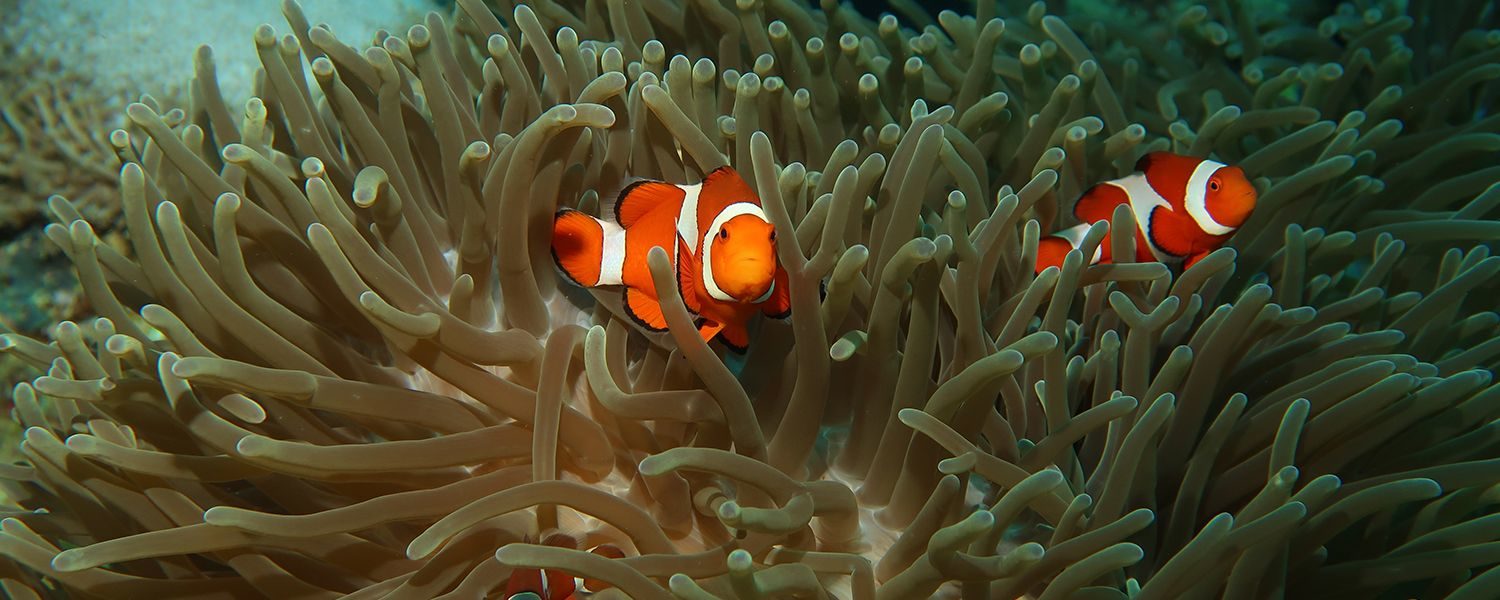
Awesome fish and where to find them
By: Patrick Brydon, Broadreach HQ January 24, 2020 High School Adventures, Middle School, Scuba, Marine Biology
At Broadreach, we understand the deep wanderlust that can grip curious students. When spring and summer roll around, many of us are eager to jump in a body of water, and for those of us who consider the ocean our second home, that means scuba diving. Time to start dusting off those wetsuits!
Many people are into larger marine animals such as sharks and manta rays, but there are countless smaller, rare and beautiful creatures hidden among coral reefs. You’ll need to travel outside of your diving comfort zone, trekking the globe and broadening your scuba skill set to find some of them!
Mandarin fish
The mandarin fish, also known as the mandarin dragonet, is easily one of the most beautiful fish in the world. At 2.6 inches, it’s a tough one to spot, usually hiding deep within coral outcroppings tucked into shallow lagoons. Broadreach’s scuba adventure to Bali, Indonesia is a great opportunity to find these little guys. Ask local dive shops if they’ve seen any mandarins lately, as their locations are often heavily guarded secrets. Brush up on your night diving skills, as dusk is the best time of day to see these rare creatures. Female mandarin fish usually emerge from their coral as the sun sets to dance and attract their male counterparts.
Pro tip: Bring a red filter for your dive light, because just like your dive buddy, mandarin fish don’t enjoy bright lights in their eyes.
Helfrich’s dartfish
This notoriously shy member of the dartfish/firefish family distinguishes itself with a sleek lavender body, bright yellow head and a striking purple forehead. This carnivorous fish lives deep in the waters from Indonesia to Fiji. They live deep down in the ocean, sometimes over 100 feet, which makes them tough to catch a glimpse of.
Pro tip: Bring a GoPro with you on a dive like this, as you’ll want to show everyone you spotted a Helfrich’s Dartfish.
Pygmy seahorse
Yes, a seahorse is a fish – it just has a tubular body and fused mouth. Pygmies are incredibly hard to find, as they’re great at camouflaging themselves within their host coral. They typically range from 14 to 27 millimeters long, so bring a magnifying glass when you hit the waters of the Coral Triangle, including Papua New Guinea, Solomon Islands, Fiji and Bali.
Pro tip: Bring a flashlight or retractable pointer, because showing the pygmy seahorse to your dive buddy might prove difficult without the aid of a well-aimed target area.
Banggai cardinalfish
The Banggai cardinalfish is native to the remote Banggai Islands of Indonesia. Measuring in at a whopping 3 inches long, it prefers shallow water reefs, seagrass beds and rubble, and can sometimes be found residing near anemones or sea urchins for additional protection. The Banggai cardinalfish can often be found in groups ranging from 9–500 fish, making it easier to spot than others on this list, but you will have to dive in remote places to find them. Diving remotely requires extra precaution, considering you will sometimes be far from medical care. Take time to review your rescue, emergency first response and oxygen provider skills so you can be prepared.
Pro tip: Don’t forget to properly weight yourself and monitor your trim while diving in shallow water. Learn more diving tips through this blog post.
Nahacky’s angelfish
Angelfish are no stranger to beauty, and most seasoned scuba divers can easily rattle off the names of their favorite angelfish. I first heard of Nahacky’s angelfish while living in Hawaii. A friend of a friend had heard of the rare fish swimming in a lesser known dive site on the Big Island – usually they’re contained to the uninhabited and off-limits Northwestern Hawaiian islands. I’ve dedicated many days trying to find this dark blue-bodied, yellow-tailed fish with iridescent blue bars on the top of its head!
Pro tip: Talk with your local divemasters about your favorite fish and ask where they might be found – they’d be happy to lend an extra pair of eyes on your search.
Patrick is a program coordinator at Broadreach HQ for our marine biology programs. He has also led several of our dive programs, including our Bali + Komodo: Alumni-Only Scuba programs.
